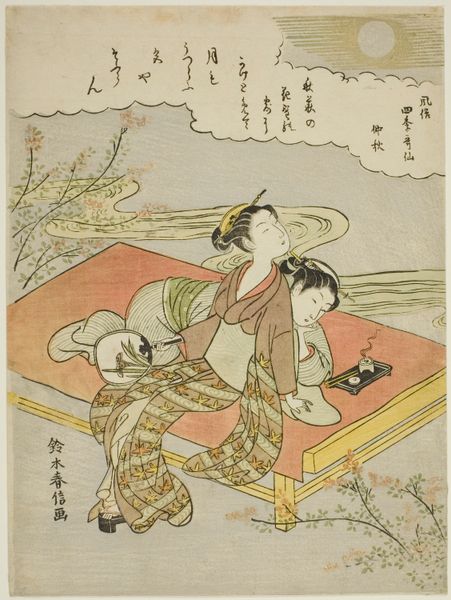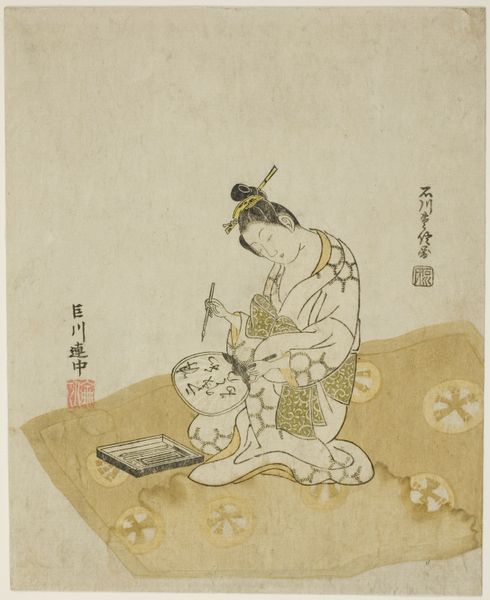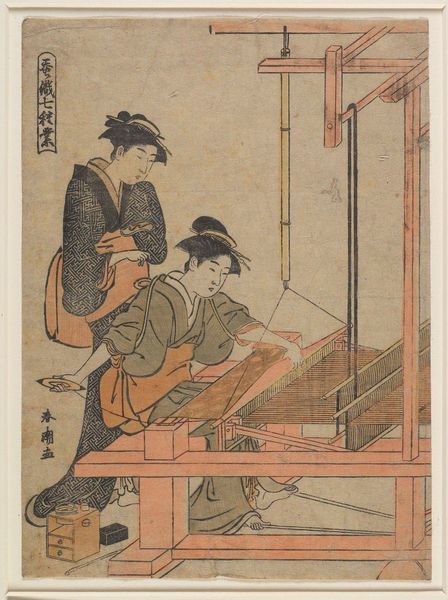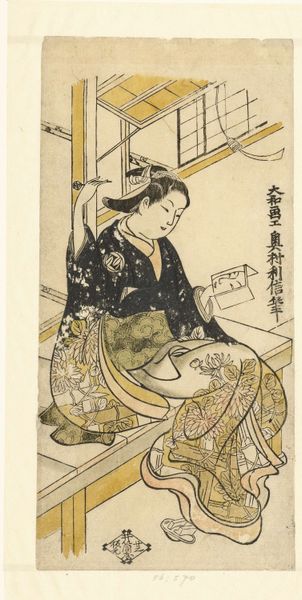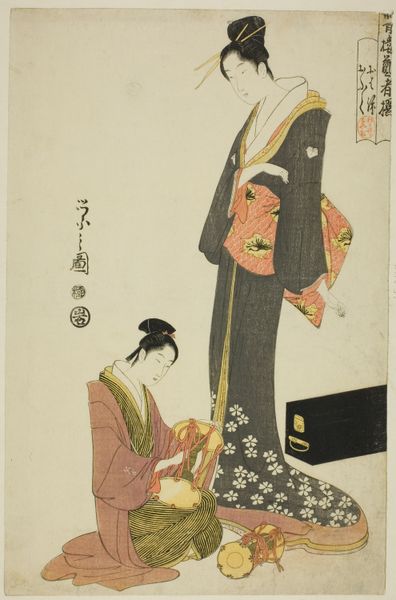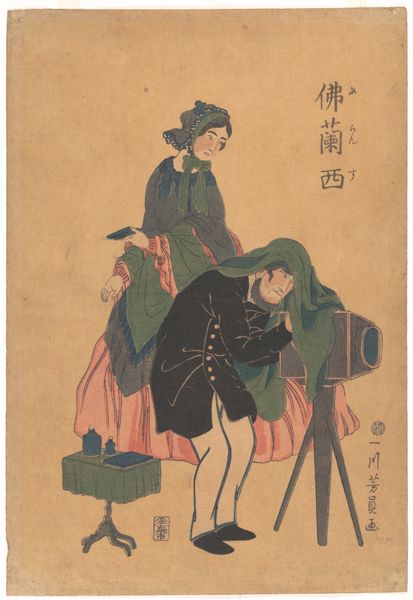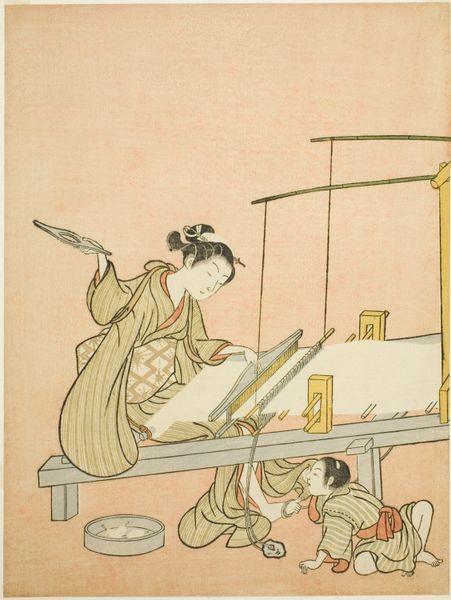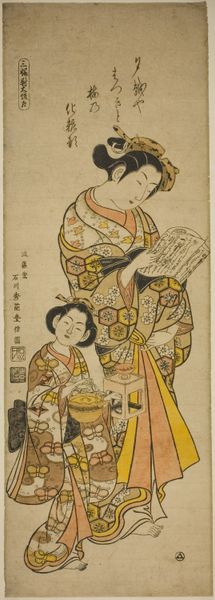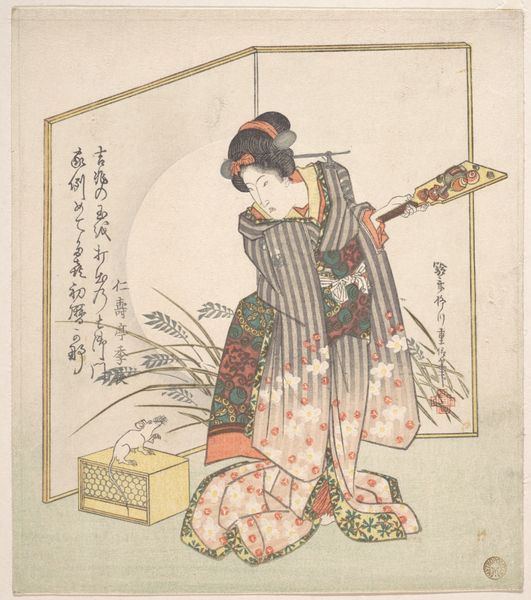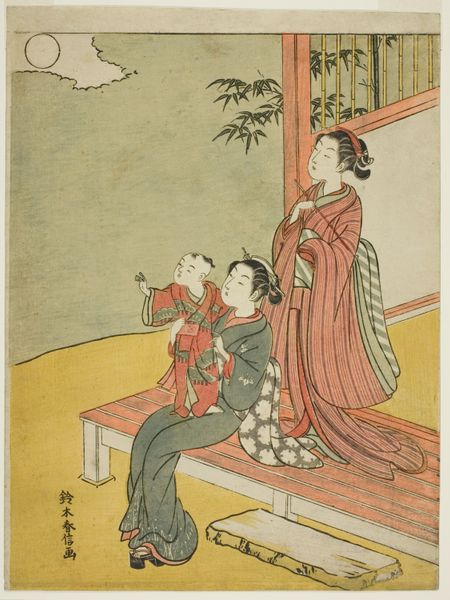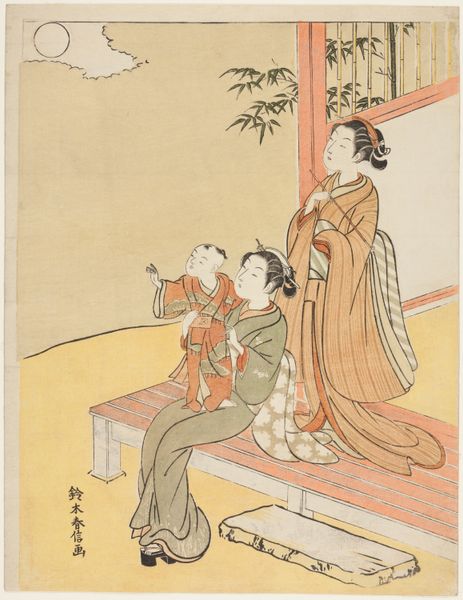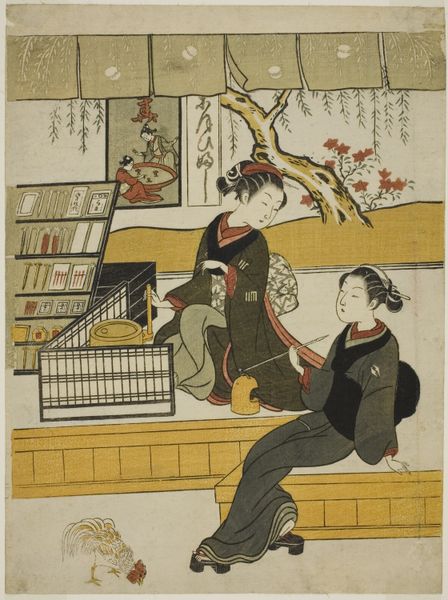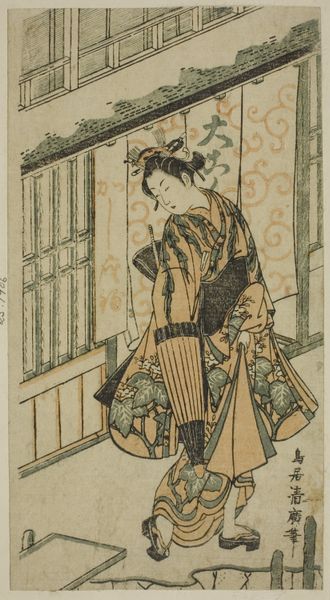
The Second Month (Ni gatsu), from the series "Fashionable Twelve Months (Furyu junikagetsu)" c. 1793
0:00
0:00
print, woodblock-print
#
portrait
# print
#
asian-art
#
ukiyo-e
#
woodblock-print
#
genre-painting
Dimensions: 10 3/8 × 7 1/2 in.
Copyright: Public Domain
Curator: Here we see "The Second Month" by Utagawa Toyokuni I, created around 1793. It's a woodblock print, part of his series "Fashionable Twelve Months," housed here at the Art Institute of Chicago. It depicts two figures, presumably women, engaged in a creative pursuit. What strikes you most when you first look at it? Editor: It's intensely serene. There's something profoundly intimate in the scene. I feel like I'm peering into a private moment, almost eavesdropping on a delicate collaboration. The muted colors add to that hushed atmosphere. Curator: Ukiyo-e prints like these often portrayed idealized versions of everyday life, particularly the lives of courtesans and actors. This piece offers a glimpse into the world of artistic production within that culture, emphasizing fashion and the arts. It reflects the rising merchant class, who were very interested in portraying such leisure and artistic life. Editor: Absolutely. I see that refinement in the smallest detail, even down to the delicate brushstrokes the woman is seemingly working on. She is wearing that wonderful patterned kimono, but she looks to be creating works that speak of larger designs and movements. I wonder who taught her this patience? Curator: Well, during the Edo period, woodblock printing became a major industry, requiring teams of artists, carvers, and printers. Depictions of such artisanship spoke to the growing consumer culture of the time and promoted female education. The fact that these women are doing something creative is itself subversive; most art during that period depicted women's work as household chores and raising children. Editor: That's fascinating! Knowing the socio-political undertones makes their intense concentration even more poignant. It’s a rebellion disguised as a quiet scene. And it begs the question, who are these women? I want their story! Curator: And I find that enduring ambiguity a part of what makes this such an insightful work. Its focus isn’t on one famous geisha or person of standing. We as viewers may not know these people; yet in its universal qualities we all understand that there is an opportunity in the rising arts. The success and production of this movement afforded many ordinary people with work and visibility. Editor: The fact that this scene seems timeless despite all the changes our cultures have faced is nothing short of genius. Curator: It certainly prompts reflection.
Comments
No comments
Be the first to comment and join the conversation on the ultimate creative platform.
